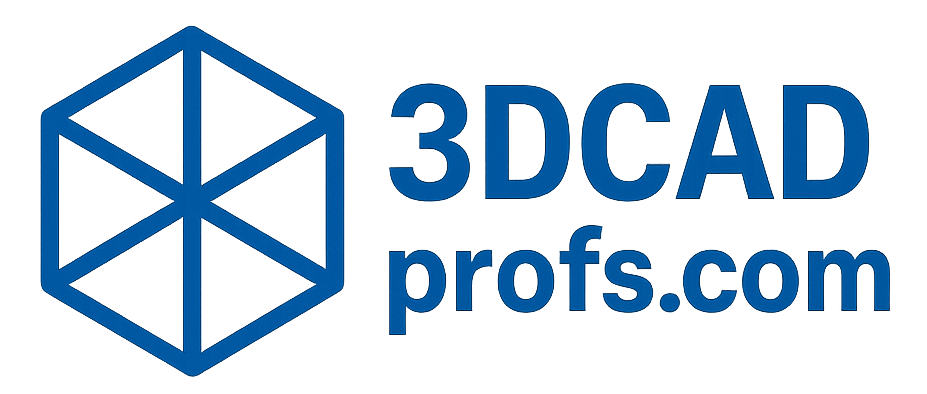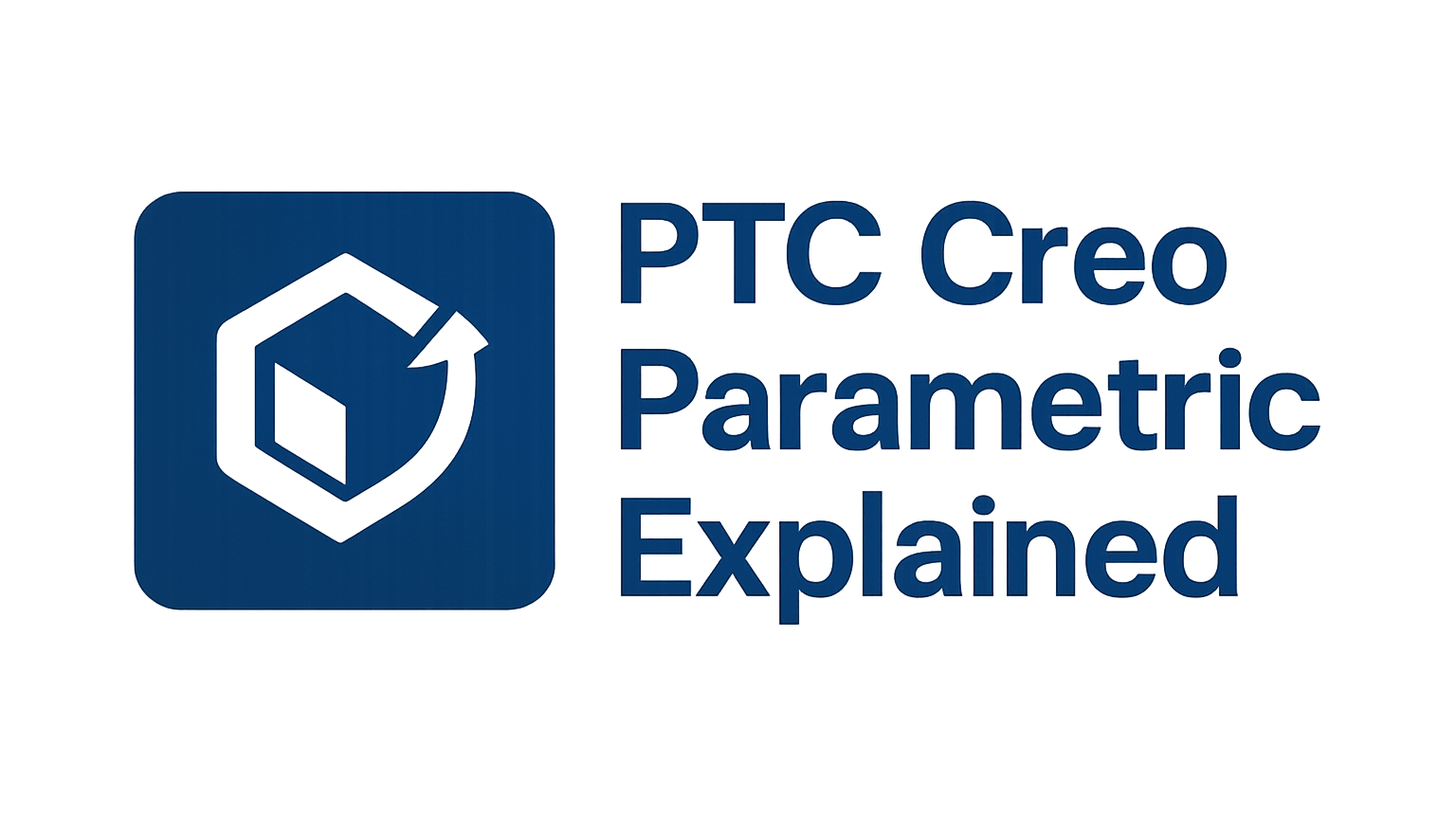PTC Creo Parametric Explained
The Powerful Suite for Engineering Design & Innovation
Introduction to PTC Creo
PTC Creo is a scalable, interoperable suite of product design software that delivers fast time to value. It is one of the leading high-end CAD/CAM/CAE solutions, tracing its roots back to Pro/ENGINEER, the original parametric modeler. Creo provides a comprehensive set of capabilities for every stage of product development, from concept design to manufacturing. Its core application, **Creo Parametric**, is renowned for its robust feature-based modeling, powerful assembly management, and deep integration with simulation and manufacturing tools.
Core Principle: Parametric, Feature-Based, and Associative
Creo is built on a powerful foundation that ensures design intent is captured and maintained:
- Parametric Modeling: Geometry is driven by dimensions, parameters, and relationships. Changing a parameter (e.g., a hole diameter) intelligently updates the entire model.
- Feature-Based History: The model is constructed as a sequence of discrete, understandable features (e.g., Extrude, Revolve, Round, Shell) recorded in a Model Tree. This history can be edited to make predictable design changes.
- Full Associativity: A change to the 3D model automatically updates all related deliverables, including assemblies, 2D drawings, analysis models, and manufacturing toolpaths, ensuring consistency and reducing errors.
3D Model
(Parts & Assemblies)
2D Drawing
(Views & Dimensions)
Bi-directional Associativity: Change in one updates the other.
Key Capabilities & Modules
The Creo suite includes a wide range of tightly integrated applications.
Part Modeling
Robust tools for creating precise 3D solid and surface models, including advanced features for sheet metal design and weldments.
Assembly Design
Powerful capabilities for managing large, complex assemblies with thousands of components, including top-down and bottom-up design methodologies.
2D Drafting & Detailing
Comprehensive tools for creating detailed, standards-compliant 2D manufacturing drawings that are fully associative with the 3D model.
Advanced Surfacing
Tools for creating complex, freeform, and high-quality Class-A surfaces for ergonomic and aesthetically driven product designs.
Simulation & Analysis (Creo Simulate)
Integrated CAE tools for structural, thermal, and vibration analysis, allowing engineers to validate performance early in the design process.
Manufacturing (Creo NC & Tool Design)
A full suite of CAM solutions for creating toolpaths for CNC machining, as well as specialized tools for mold, tool, and die design.
Differentiating Features & Technologies
Model-Based Definition (MBD)
Strong capabilities for embedding product and manufacturing information (PMI), including GD&T, directly into the 3D model, reducing reliance on 2D drawings.
Multi-Body Design
Allows for the creation of multiple solid bodies within a single part file, which is powerful for designing complex parts, weldments, and tooling.
Generative Topology Optimization (GTO)
An extension that automatically creates optimized designs based on user-defined loads, constraints, and goals to reduce weight while maintaining structural integrity.
Augmented Reality (AR) Capabilities
Integrated tools to publish and share designs in AR, allowing stakeholders to visualize products at scale in a real-world context.
Deep Integration with Windchill PLM
Seamless, out-of-the-box integration with PTC’s Windchill platform for comprehensive product lifecycle management, data control, and enterprise collaboration.
Advantages & Disadvantages
Advantages
- Robust and Stable: Known for its reliability and robustness, especially in managing large, complex assemblies.
- Powerful Parametric Control: Strong feature-based and history-driven modeling provides excellent control over design intent.
- Comprehensive Capabilities: A deep feature set covers a wide range of engineering tasks from design to manufacturing.
- Strong MBD and Detailing: Excellent tools for creating detailed drawings and model-based definitions.
- Scalable: The suite of applications can be tailored to meet the needs of different industries and company sizes (though primarily high-end).
- Top-Down Design: Powerful tools for skeleton models and top-down assembly design methodologies.
Disadvantages
- Steep Learning Curve: Can be difficult for new users to master due to its depth and sometimes complex UI.
- High Cost of Ownership: Licensing, extensions, and maintenance can be very expensive.
- Less Intuitive User Interface: The UI is often considered less modern or user-friendly than some of its competitors.
- File Compatibility: Can have issues opening newer versions of files in older versions of the software.
- Primarily Desktop-Based: While cloud options exist (e.g., Onshape, Windchill integration), the core parametric application is desktop-bound.
Who Uses PTC Creo?
Creo is a powerhouse in industries focused on complex mechanical engineering:
Creo vs. Competitors (Brief)
| Aspect | PTC Creo | CATIA | Siemens NX |
|---|---|---|---|
| Core Strength | Robust Parametric Modeling, Large Assemblies | Advanced Surfacing, Systems Engineering | Modeling Flexibility (Synchronous Tech) |
| User Interface | Complex, powerful | Very complex | Complex, powerful |
| PLM Integration | Excellent (Windchill) | Excellent (ENOVIA) | Excellent (Teamcenter) |
| Cost Tier | Very High | Very High | Very High |
The Engineer’s Choice for Robust Design
PTC Creo Parametric continues the powerful legacy of Pro/ENGINEER, providing a highly robust and scalable solution for complex product development. Its strength in parametric modeling, large assembly management, and deep integration with the wider Creo suite and Windchill PLM makes it a formidable tool for serious engineering endeavors. For companies that require rigorous design control, detailed documentation, and a comprehensive path from concept to manufacturing, Creo offers a mature and powerful platform.

